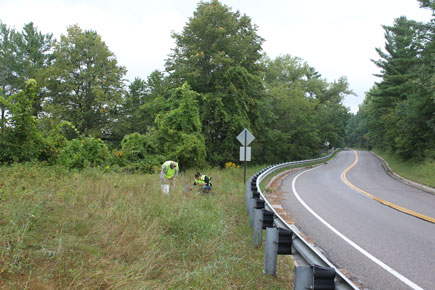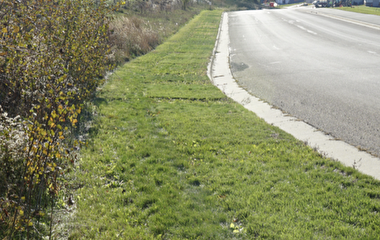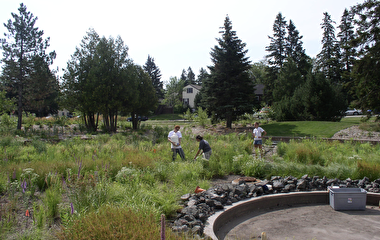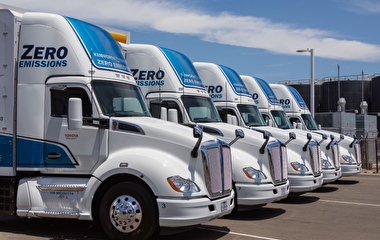Managing stormwater runoff from roadways is a top regulatory and environmental concern for highway departments. However, creating the installations needed to accomplish this goal often requires costly commercial materials and hauling operations. The Minnesota Department of Transportation (MnDOT) and U of M researchers are investigating the use of previously discarded natural materials close to construction sites for stormwater management, and a new study shows this approach has tremendous cost-saving potential.
“This project’s results allow MnDOT to use onsite soil to build bioslopes and bioswales to retain the first inch of roadway runoff and associated pollutants,” says David Saftner, head of the University of Minnesota Duluth’s Department of Civil Engineering. “Using onsite materials rather than transporting new materials to the site will save taxpayer dollars.”
In every construction project, MnDOT follows state regulations by designing and constructing roadways to contain and manage the “first flush”—the first inch of stormwater runoff flowing from the pavement. This is often accomplished with low-impact development practices such as bioslopes and bioswales (shallow ditches) along roadways that mimic the original landscape while absorbing runoff and filtering pollutants that wash from the roads.
“Typically, soils that are unsuitable for supporting pavements, such as peat and muck, are dug out and hauled away as waste while commercial compost mixtures are transported to the site for bioslope and bioswale construction,” Saftner explains. “Our goal in this project was to apply the results of earlier research to the design and construction of bioswales and bioslopes using local materials to avoid these costly practices.”
In this latest project phase, a multidisciplinary research team addressed all aspects of alternative filter material suitability, including water retention and infiltration capacity, contaminant-filtering effectiveness, and the ability to grow and support vegetation. Researchers began by conducting a comprehensive literature review of bioslope and bioswale design and monitoring methods and examining best management practices and regulations.
beneath it. The blue arrows indicate the flow of water." data-embed-button="media_browser" data-entity-embed-display="media_image" data-entity-embed-display-settings="{"image_style":"","image_link":""}" data-entity-type="media" data-entity-uuid="cb49fb35-96ff-4254-aa46-8953e0cee2dc" data-langcode="en" title="stormwater2">
Next, they tested on-location and lab materials from nine established and newly constructed biofilter sites from across Minnesota, monitored six established pilot test sites, and established and monitored a new peat-based biofilter stormwater system along a five-mile stretch of Minnesota roadway.
“Our lab and field investigations showed the salvage and reuse benefits of muck and other organic materials for slope and ditch topdressing to retain the first flush of rain from roadways,” says Dwayne Stenlund, an erosion control specialist with MnDOT’s Office of Erosion Control and Stormwater Management.
Alternative local filtration media such as peat and muck show great promise in stormwater management bio-installations, so the research team is eager to continue this potentially cost-saving research. The next phase of the project will gather additional data from all plots to more fully assess the alternative media’s capabilities over time.



